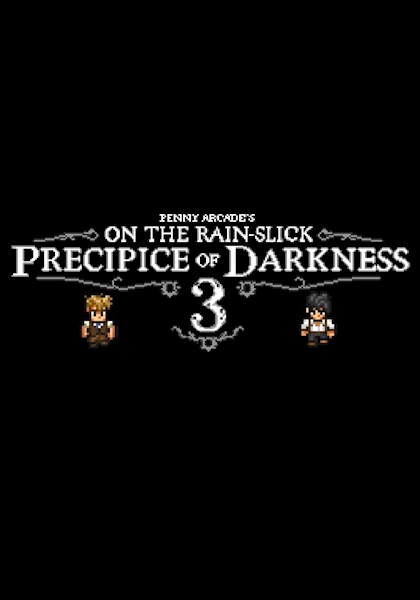Penny Arcade Adventures: Episode Three Review
-
Category: ReviewsHits: 13203

Article Index
Page 1 of 2
The Penny Arcade Adventures series has a somewhat tumultuous history. Originally released back in 2008 and developed by Hothead Games, the series blended the famous webcomic's trademark art style and writing with RPG and adventure game mechanics. However, after Hothead abandoned the third title in the franchise to go work on Deathspank, the fate of the series seemed sealed, especially as Penny Arcade writer Jerry Holkins decided to release the planned third game's story as its own novel. That's now changed with the release of Penny Arcade Adventures: On the Rain-Slick Precipice of Darkness Episode 3, following a change of developer to Zeboyd Games, who RPG fans might recognize as the indie studio behind Breath of Death VII and Cthulhu Saves the World. With a brand-new team behind the game, the end result is novel and refreshing - despite being a very different game, the changes have, for the most part, worked out for the better.
Darkness Returns
The Penny Arcade Adventures games are, more or less, a spin-off of the webcomic, starring many of its main characters, including stars Tycho and Gabe. However, rather than taking place in the webcomic's contemporary world, Adventures sports a parody-laden steampunk/Lovecraftian setting that's fairly original and entertaining. The games follow Tycho and Gabe of the Startling Developments Detective Agency, as well as a number of supporting characters, on their adventures saving the world from (what else?) inconceivable universe-eating behemoths. Although the series does have hints of an overarching storyline, the games are still mostly self-contained, and fairly light on story anyhow.
The changes made in Episode 3 are drastic to say the least. While the first two games borrowed from adventure games and featured an active turn-based combat system, all taking place in 3D worlds modeled after Mike Krahulik's signature art style, Episode 3 is planted firmly in a 16-bit pixel art style. Moreover, gameplay now revolves almost entirely around JRPG-style combat through maze-like dungeons, with very little exploration and virtually no puzzle-solving. While a world map teases exploration and discovery, in truth, Episode 3 is entirely linear save for an optional arena you can visit to grind up your skills.
This shift, though dramatic, isn't at all a bad thing. While Zeboyd's signature JRPG-style combat is extremely basic on the surface, it's also engaging - things start out slow and easy, but midway through the game the difficulty picks up and you'll need to use quite a bit of strategy to survive. The simple turn-based combat interface hides a ton of depth, with dozens of character classes and attacks, different damage types and resistances, and all the other classic RPG staples - and while in most modern RPGs they're basically flavor, in Episode 3, knowledge of the mechanics is required to beat the toughest bosses. More than most RPG developers around right now, I think Zeboyd Games really understand how even simple systems and mechanics can be made exciting through good balancing, pacing and difficulty curves, and that's exactly what Episode 3 offers.
Of course, outside of this turn-based combat, there really isn't much to do. Gameplay mostly takes place in a number of colorful dungeon environments that span a huge variety of themes - some, like Hobo Alley, return from prior games, while the Bank of Money, complete with its inter-dimensional vaults, are brand-new. Some of these aren't entirely linear, but the maze-like nature of some dungeons can become disorienting due to the lack of strong visual landmarks, and there's very little loot to find (though most of it is very useful, as both gear and money are fairly tight). This is a common issue with the other Zeboyd titles, and it's unfortunate that nothing much was done to improve on it.
Character System & Mechanics
Since combat is almost all to do in the game, it's important that it's good. Fortunately, much like prior Zeboyd releases, Episode 3 has some very satisfying turn-based battles that recall the best of old-school JRPGs, and even improve upon them. There are a number of unique and interesting mechanics that put a new spin on the tired formula through what are ultimately some pretty simple changes.
For instance, in most RPGs, you start out with MP or mana... but in Episode 3, characters start battles with none, and gain 1 MP per turn (which can be bolstered with items and abilities). Meanwhile, enemies gain in attack power the longer the battle goes on. Since special moves, later on, are just about the only ones you'll want to use, combat becomes an interesting decision-making process of managing MP across four characters, and planning in advance how to best use your abilities and the time available before enemies become truly deadly. While it can be tempting to spam default attacks, usually patience will win out in the end... though this varies quite a bit based on class load-out.


